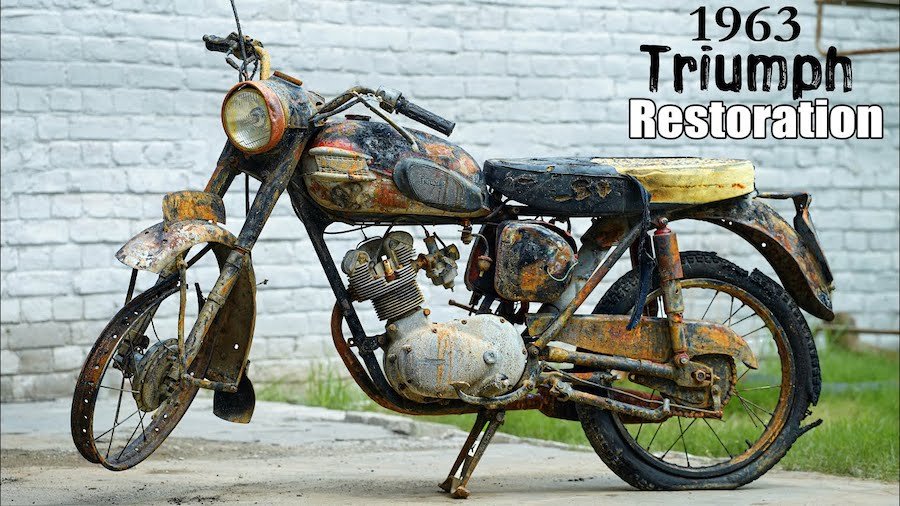Watch A Triumph Tiger Cub Regain Its Stripes In This Restoration Series

True love is when you still retain affection despite something’s (or someone’s) faults. That’s absolutely no less true in the motorcycle world, and once you find the sub-niche of motorbikes that speaks to you, we guarantee that you’ll know it. Take this 1963 Triumph Tiger Cub, for example. Has it seen better days? Absolutely. Can it be saved? Like so many bikes, that all depends on how much time, effort, and money the person who found it is willing to put into it.
Luckily, it’s the YouTube channel Live with Creativity, and if you’re not already familiar with this channel, restoration of all kinds of things is pretty much what they do. While it’s true that this Tiger Cub isn’t looking great, it’s also almost 60 years old. So, it’s nearly a given that it’s going to require a bit of TLC if it’s going to get back to good working order.
For those unfamiliar, the Tiger Cub was born in 1953, as a 1954 model. One of Triumph’s single-cylinder commuter machines, it took what Triumph had learned in building the Terrier 150 and made a slightly more powerful, slightly less fault-laden, 200cc machine. Both bikes featured overhead valves, which was considered pretty advanced at the time, wrote Ian Falloon in The Complete Book of Classic and Modern Triumph Motorcycles, 1937 to Today.
For comparison, the 149cc single in the Terrier had a bore and stroke of 57 x 58.5mm, while the 199cc Tiger Cub was 63 x 64mm. The Terrier managed eight horsepower at 6,000 rpm, while the Tiger Cub ramped that number up to 10 at the same revs. It also featured a new, improved cylinder head, as well as a larger Amal carburetor.
The higher-level exhaust system was also new for the Tiger Cub, and the whole package was a full eight or nine miles an hour faster than the Terrier upon the Tiger Cub’s introduction. The Tiger Cub proved so successful, it stayed in production until 1968, and untold numbers of riders learned on “the baby Bonnie,” as it was nicknamed.
Back to the video, which is the first in a series that LWC is doing on this bike. What’s the first thing you have to do when assessing a new project bike where you know that just about everything needs your attention? You have to take it apart, of course. That’s the best way to work out what needs doing, and then develop an appropriate plan of action. This video is all about taking the bike apart and starting to clean up the frame, fenders, and a few other assorted bits and pieces.
Thankfully, the rust seems to all be of the surface variety, and so far, there’s no serious rot going on. Once the paint is removed and the surface is adequately cleaned up, it’s time for painting and/or powder coating. In the second video, LWC tackles the engine—and the mirror finish they get on the engine cases after cleanup is extremely impressive. So far, only the first two videos in the series are available to view, but we have no doubt that the finished project is going to be worth the wait.
Nouvelles connexes
